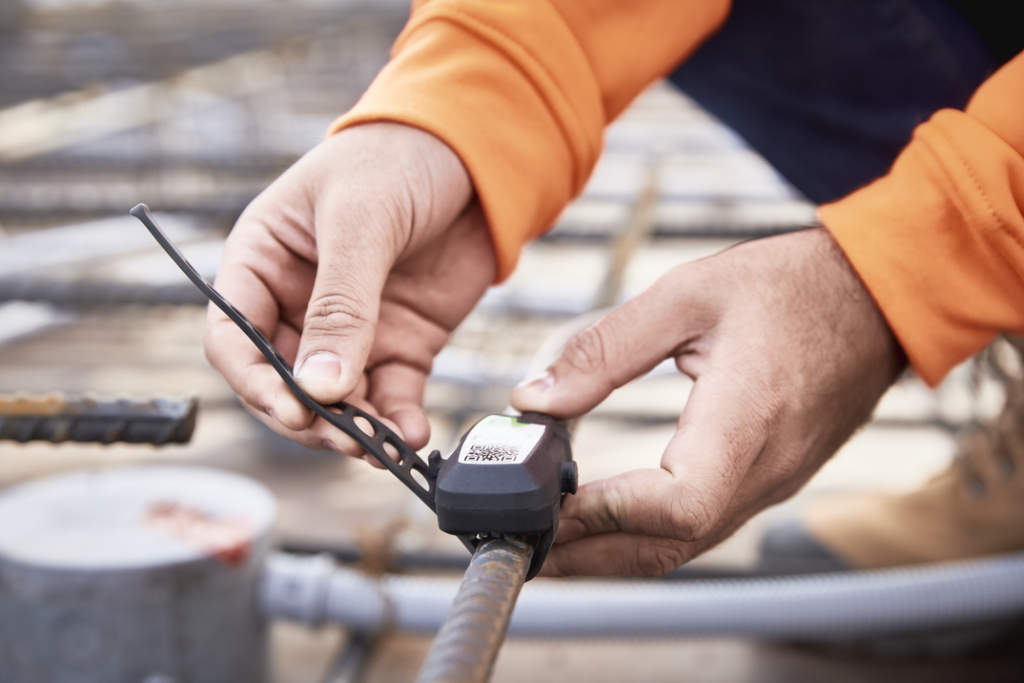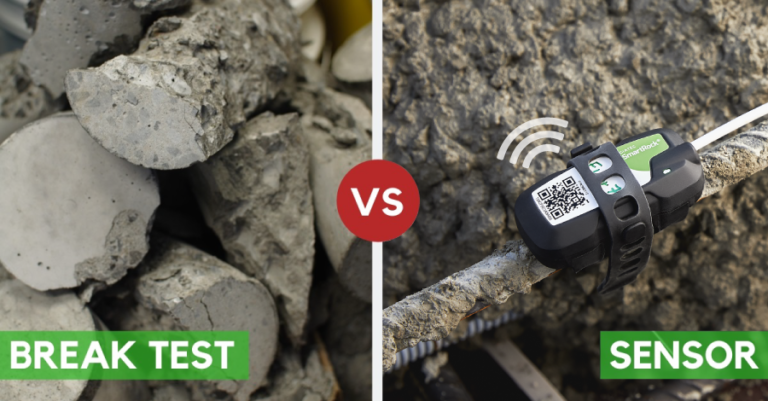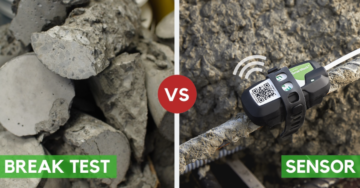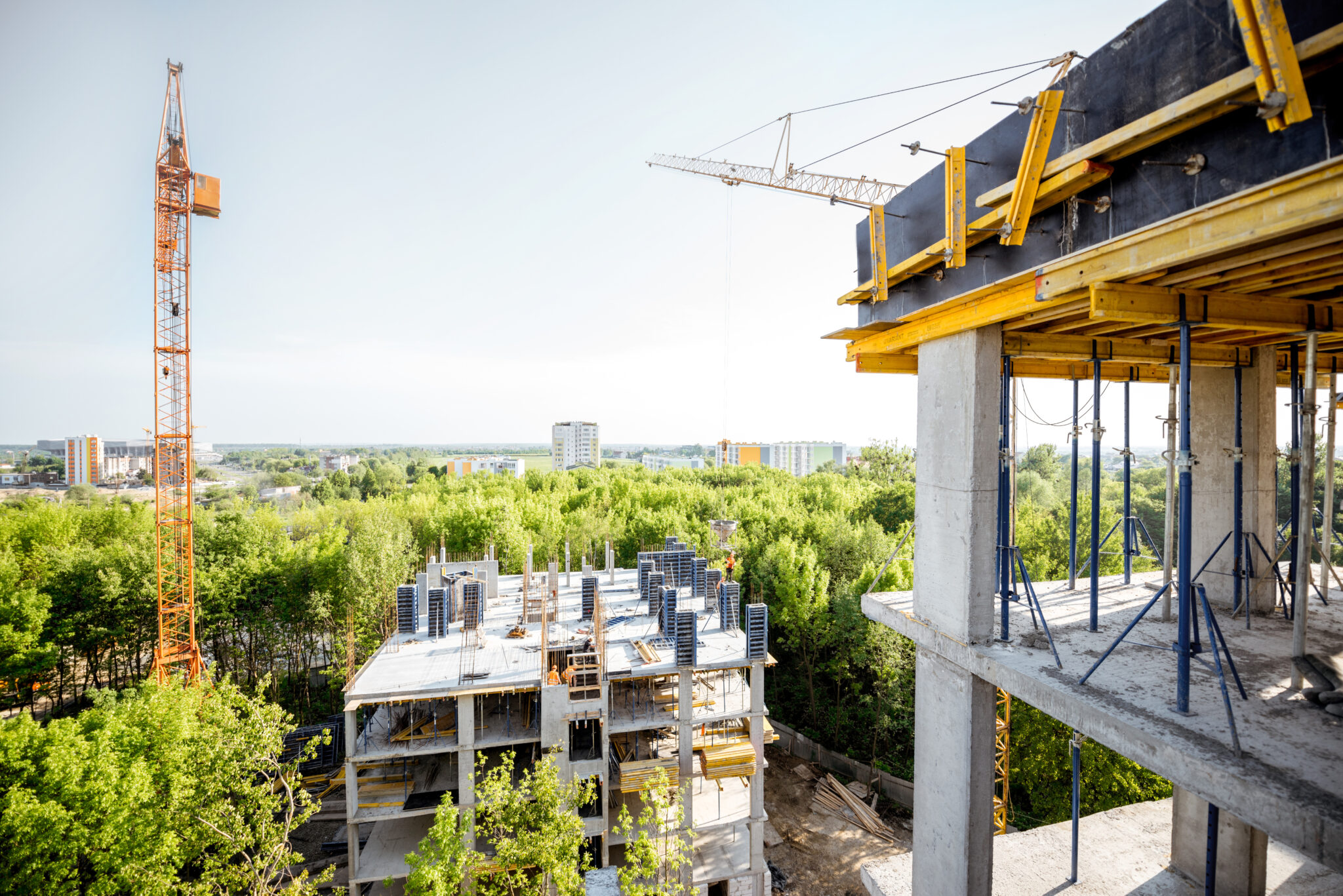A lack of productivity onsite is one of the most frustrating issues facing the construction industry today. Think about the hours you spend in a single day with no choice but to sit around and wait. Historically, this issue has been largely neglected in the industry. “Up to 66% of the day on a construction site dedicated to anything but actual building work” (LetsBuild). An inefficient jobsite means that your project deadlines won’t be met. This directly affects your bottom line as more funding is required to pay for additional labor.
SmartRock® Long Range Savings for Big Projects
Don’t Let Concrete Compressive Strength Tests Delay Your Project Schedule
The strength of in-place concrete is most commonly measured by sending field-cured cylinders to a lab. There, they undergo a break test in a compression machine. This practice has remained largely unchanged since the early 19th century (Concrete Network). The problem is that testing labs frequently don’t return strength results on time. Despite your best efforts to guide a project to success, late lab results make a mess of your schedule. This makes delays inevitable.
Picture the following scenario, which we are sure has happened to you before. Youre onsite, waiting to hear from the lab. The last concrete pour was done three days ago and you’re certain that the slab has reached 75% of target compressive strength. However, this information needs to be confirmed before stripping forms or tensioning the slab. The team has gotten as much work done as they can to move the jobsite along but without those test results the project is at a standstill and minimal work is getting done. This lack of productivity on site can’t be helped, and you have no idea when you’re going to hear from the lab. You’re just hoping the team won’t have to work overtime to make sure the project is finished by the deadline that was promised.
This type of delay is not something new. Though you may try to rearrange your schedule to accommodate when labs will get back to you, this is difficult to determine. More often than not, productivity is completely thrown out the window. Therefore, rather than staying ahead of schedule, you have to find a way to make up for lost time. The thing is, everyone uses labs to test the strength of concrete, so what other option is there?
Using Wireless Maturity Sensors to Shorten Your Project Schedule
Dexter Construction, the largest civil contractor in Atlantic Canada, turned to wireless maturity sensors to test concrete strength onsite and reduce their reliance on third-party labs. During the construction of a large wharf, extreme temperature fluctuations meant that the team had to finish the project before the quality of their structure could be affected. They used 80 sensors in total, embedding three devices per ten-foot wall. This helped them accurately track concrete curing as the project progressed.
In need of a concrete-strength solution? Check out our page!
Concrete compressive strength tests were used solely on day twenty-eight to confirm 90%+ strength results for acceptance purposes. This eliminated the extra costs of having a consultant visit the jobsite to test cylinder specimens on day-three or day-seven. “Typically, we have three field-cured cylinders, and now, we only have one—every second or third pour,” stated Dexter Construction Quality Control General Manager, Sheldon Roach. As a result, the team was able to save two days per pour.
Follow Dexter Construction’s experience with wireless maturity sensors here.

How do Wireless Sensors Work?
Wireless maturity sensors allow you to monitor the strength of your concrete directly onsite, according to the maturity method, as per ASTM C1074. This method is the most commonly used approach to reduce or eliminate the number of concrete compressive strength break tests needed to measure the strength of your in-place concrete and still obtain accurate data. The sensors are fully embedded in the concrete (secured on the rebar) before pouring. Using a wireless connection, temperature and strength data is sent to your mobile device via an app and updated in real-time every 15 minutes.
This means that your time isn’t wasted onsite waiting for data from an outsourced lab.
With wireless maturity sensors, such as SmartRock®, you’re notified immediately when your in-place concrete has reached 75% compressive strength. Whether it’s in twelve hours, two and a half days, or even five days, workers can then take action right away.
Remote Monitoring Solutions
With the SmartHub™ 24/7 remote monitoring device, SmartRock sensor data is easily accessed and analyzed through direct wireless communication with your mobile device. If you need to access your concrete data without visiting the jobsite, simply install the SmartHub unit in the field and get sensor data automatically collected and sent to you via the LTE network. With SmartHub you can:
- Track the status of your pour at anytime, from anywhere, on any device;
- Collect guaranteed uninterrupted data 24/7 (unlike other hub devices);
- Never lose project data, even if the SmartHub battery dies or gets damaged on the jobsite;
- Easily install anywhere onsite;
- Receive custom alerts and smart notifications;
- Completely sync data between your mobile device and Giatec 360 dashboard.
The ultimate goal is to ditch early and unnecessary break tests to get on your construction process faster. With this method, not only will you meet your project deadlines, you will also save days in your schedule that would normally be spent waiting on lab results.
Visit our SmartRock product page to learn more about how to improve productivity on your jobsite and shorten your schedule with wireless maturity sensors.
Sources:
Construct Connect
LetsBuild
Concrete Network
**Editor’s Note: This post was originally published in March 2019 and has been updated for accuracy and comprehensiveness.









